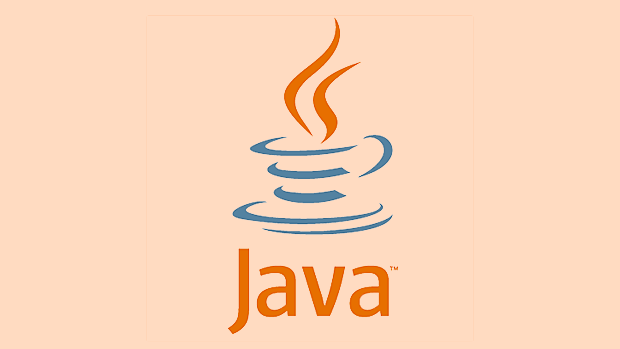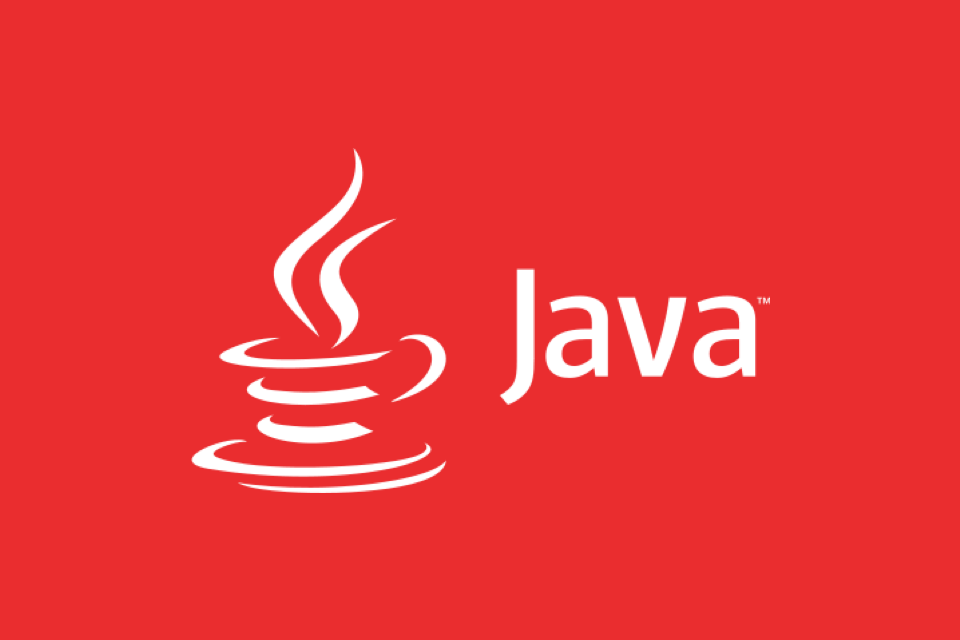As of 2024, Java remains a dominant and evolving force in enterprise and cloud-native development. 1. Java 21 (LTS) is widely adopted, with Java 22 released, featuring key updates like records, pattern matching, sealed classes, and virtual threads—revolutionizing concurrency. 2. Spring Boot 3 with Spring Framework 6 is standard, supporting Java 17 , Jakarta EE, and new AI integration via Spring AI, while Quarkus, Micronaut, and Helidon gain traction for serverless and Kubernetes environments. 3. Maven still leads in enterprise, but Gradle grows due to faster builds and Kotlin DSL, with improved CI/CD integration. 4. Java thrives in cloud-native ecosystems using Docker, Kubernetes, GraalVM Native Image, service meshes like Istio, and event-driven tools like Kafka. 5. IntelliJ IDEA is the top IDE, with VS Code rising, and developers benefit from free JDKs like Amazon Corretto, Azul Zulu, and Eclipse Temurin, alongside strong observability with Micrometer and OpenTelemetry. 6. Performance has significantly improved through virtual threads, advanced garbage collectors (ZGC, Shenandoah), and Project Panama, making Java competitive with Go, Node.js, and Rust in backend performance. 7. The community remains robust with contributions from Oracle, Microsoft, Amazon, and Eclipse, while future projects like Amber, Leyden, and AI-driven frameworks signal ongoing innovation. Java is not fading—it is becoming leaner, faster, and smarter, remaining a top choice for scalable, production-grade systems.

As of 2024, the Java ecosystem remains robust, mature, and highly relevant—especially in enterprise environments, large-scale systems, and cloud-native development. While newer languages and frameworks continue to gain attention, Java has evolved significantly to stay competitive, embracing modern development practices and tooling. Here's a breakdown of the current state across key areas.

1. Java Language & JVM Evolution
Java continues to follow its six-month release cadence, with Java 21 (a long-term support/LTS version) now widely adopted and Java 22 released in March 2024. Most organizations are migrating to or have already adopted Java 21, thanks to its stability and long-term support (Oracle and other vendors like Azul, Amazon, and IBM commit to support until at least 2026).
Key recent language features gaining traction:

- Records (Java 16 ) – widely used for clean data carriers.
- Pattern Matching (switch and instanceof) – reduces boilerplate and improves readability.
- Sealed Classes (Java 17 ) – enables domain modeling with restricted hierarchies.
- Virtual Threads (Project Loom, Java 21) – a game-changer for high-throughput concurrent applications.
Virtual threads, in particular, are transforming how developers think about concurrency. They allow millions of lightweight threads to run efficiently on a small number of OS threads, drastically simplifying scalable server-side code—especially in web services and microservices.
2. Frameworks & Application Development
Spring Boot remains the dominant framework in the Java world. As of 2024:

- Spring Boot 3 and Spring Framework 6 are standard, requiring Java 17 and fully supporting Jakarta EE 9 (the rebranded Java EE).
- Spring Native and GraalVM integration have matured, enabling fast startup times and lower memory usage for cloud-native apps.
- Spring AI, a new addition, reflects growing interest in integrating AI/ML capabilities directly into enterprise Java apps.
Alternatives like Micronaut, Quarkus, and Helidon are gaining ground—especially in serverless and Kubernetes environments—due to their ahead-of-time (AOT) compilation and low footprint. Quarkus, in particular, markets itself as "supersonic, subatomic," and is popular in Red Hat ecosystems.
3. Build Tools & Dependency Management
- Maven still dominates in enterprise settings, but Gradle is growing, especially in polyglot or Android projects.
- Gradle’s configuration cache and Kotlin DSL make builds faster and more maintainable.
- Tools like Gradle Enterprise help large organizations optimize build performance and dependency management.
There's also rising interest in Maven with extensions (e.g., Maven Wrapper, Maven Polyglot) and better integration with CI/CD pipelines.
4. Cloud-Native & Microservices
Java is adapting well to cloud-native development:
- Kubernetes and containerization (via Docker) are standard.
- GraalVM Native Image allows Java apps to compile to native executables, making them ideal for serverless and Function-as-a-Service (FaaS) platforms.
- Projects like Quarkus and Micronaut are optimized for Kubernetes and serverless, offering near-instant startup—critical for event-driven architectures.
Many teams are using Java with service mesh (e.g., Istio), observability tools (OpenTelemetry, Micrometer), and event-driven patterns (Kafka, RabbitMQ).
5. Developer Experience & Tooling
- IDEs: IntelliJ IDEA remains the favorite, followed by VS Code (with strong Java extensions via Eclipse JDT and Language Support for Java).
- JDK distributions: Developers have more choices than ever—Amazon Corretto, Azul Zulu, Eclipse Temurin, and Oracle JDK—all offering free production use.
- Observability: Micrometer, OpenTelemetry, and integration with Prometheus/Grafana are now standard for monitoring.
6. Performance & Efficiency
Thanks to:
- Virtual threads reducing thread overhead
- Project Panama improving native interop
- Better GCs (like ZGC and Shenandoah) enabling sub-10ms pauses even with multi-GB heaps
Java is no longer seen as "slow" or "memory-heavy" by default. With proper tuning and modern features, it competes well with Go, Node.js, and even Rust in many backend scenarios.
7. Community & Future Outlook
The community remains strong, with active contributions from Oracle, Microsoft (via their OpenJDK builds), Amazon, and the Eclipse Foundation. The Adoptium (formerly AdoptOpenJDK) project ensures high-quality, vendor-neutral builds.
Looking ahead:
- Project Amber (pattern matching, record patterns) will further reduce boilerplate.
- Project Leyden aims to improve startup time and footprint via static linking (still experimental).
- AI integration and LLM tooling in enterprise apps may drive new Java frameworks and libraries.
Final Thoughts
Java in 2024 isn’t flashy, but it’s pragmatic, performant, and production-proven. It’s not going anywhere. Instead, it’s evolving—quietly but effectively—into a modern platform capable of powering everything from legacy monoliths to cloud-native microservices and AI-enhanced backends.
For teams valuing stability, scalability, and a rich ecosystem, Java remains a top choice.
Basically, if you thought Java was fading, think again—it’s just gotten leaner, faster, and smarter.
The above is the detailed content of State of the Java Ecosystem in 2024. For more information, please follow other related articles on the PHP Chinese website!

Hot AI Tools

Undress AI Tool
Undress images for free

Undresser.AI Undress
AI-powered app for creating realistic nude photos

AI Clothes Remover
Online AI tool for removing clothes from photos.

Clothoff.io
AI clothes remover

Video Face Swap
Swap faces in any video effortlessly with our completely free AI face swap tool!

Hot Article

Hot Tools

Notepad++7.3.1
Easy-to-use and free code editor

SublimeText3 Chinese version
Chinese version, very easy to use

Zend Studio 13.0.1
Powerful PHP integrated development environment

Dreamweaver CS6
Visual web development tools

SublimeText3 Mac version
God-level code editing software (SublimeText3)

Hot Topics
 Building RESTful APIs in Java with Jakarta EE
Jul 30, 2025 am 03:05 AM
Building RESTful APIs in Java with Jakarta EE
Jul 30, 2025 am 03:05 AM
SetupaMaven/GradleprojectwithJAX-RSdependencieslikeJersey;2.CreateaRESTresourceusingannotationssuchas@Pathand@GET;3.ConfiguretheapplicationviaApplicationsubclassorweb.xml;4.AddJacksonforJSONbindingbyincludingjersey-media-json-jackson;5.DeploytoaJakar
 A Developer's Guide to Maven for Java Project Management
Jul 30, 2025 am 02:41 AM
A Developer's Guide to Maven for Java Project Management
Jul 30, 2025 am 02:41 AM
Maven is a standard tool for Java project management and construction. The answer lies in the fact that it uses pom.xml to standardize project structure, dependency management, construction lifecycle automation and plug-in extensions; 1. Use pom.xml to define groupId, artifactId, version and dependencies; 2. Master core commands such as mvnclean, compile, test, package, install and deploy; 3. Use dependencyManagement and exclusions to manage dependency versions and conflicts; 4. Organize large applications through multi-module project structure and are managed uniformly by the parent POM; 5.
 css dark mode toggle example
Jul 30, 2025 am 05:28 AM
css dark mode toggle example
Jul 30, 2025 am 05:28 AM
First, use JavaScript to obtain the user system preferences and locally stored theme settings, and initialize the page theme; 1. The HTML structure contains a button to trigger topic switching; 2. CSS uses: root to define bright theme variables, .dark-mode class defines dark theme variables, and applies these variables through var(); 3. JavaScript detects prefers-color-scheme and reads localStorage to determine the initial theme; 4. Switch the dark-mode class on the html element when clicking the button, and saves the current state to localStorage; 5. All color changes are accompanied by 0.3 seconds transition animation to enhance the user
 Developing a Blockchain Application in Java
Jul 30, 2025 am 12:43 AM
Developing a Blockchain Application in Java
Jul 30, 2025 am 12:43 AM
Understand the core components of blockchain, including blocks, hashs, chain structures, consensus mechanisms and immutability; 2. Create a Block class that contains data, timestamps, previous hash and Nonce, and implement SHA-256 hash calculation and proof of work mining; 3. Build a Blockchain class to manage block lists, initialize the Genesis block, add new blocks and verify the integrity of the chain; 4. Write the main test blockchain, add transaction data blocks in turn and output chain status; 5. Optional enhancement functions include transaction support, P2P network, digital signature, RESTAPI and data persistence; 6. You can use Java blockchain libraries such as HyperledgerFabric, Web3J or Corda for production-level opening
 python property decorator example
Jul 30, 2025 am 02:17 AM
python property decorator example
Jul 30, 2025 am 02:17 AM
@property decorator is used to convert methods into properties to implement the reading, setting and deletion control of properties. 1. Basic usage: define read-only attributes through @property, such as area calculated based on radius and accessed directly; 2. Advanced usage: use @name.setter and @name.deleter to implement attribute assignment verification and deletion operations; 3. Practical application: perform data verification in setters, such as BankAccount to ensure that the balance is not negative; 4. Naming specification: internal variables are prefixed, property method names are consistent with attributes, and unified access control is used to improve code security and maintainability.
 How to use Java MessageDigest for hashing (MD5, SHA-256)?
Jul 30, 2025 am 02:58 AM
How to use Java MessageDigest for hashing (MD5, SHA-256)?
Jul 30, 2025 am 02:58 AM
To generate hash values using Java, it can be implemented through the MessageDigest class. 1. Get an instance of the specified algorithm, such as MD5 or SHA-256; 2. Call the .update() method to pass in the data to be encrypted; 3. Call the .digest() method to obtain a hash byte array; 4. Convert the byte array into a hexadecimal string for reading; for inputs such as large files, read in chunks and call .update() multiple times; it is recommended to use SHA-256 instead of MD5 or SHA-1 to ensure security.
 css dropdown menu example
Jul 30, 2025 am 05:36 AM
css dropdown menu example
Jul 30, 2025 am 05:36 AM
Yes, a common CSS drop-down menu can be implemented through pure HTML and CSS without JavaScript. 1. Use nested ul and li to build a menu structure; 2. Use the:hover pseudo-class to control the display and hiding of pull-down content; 3. Set position:relative for parent li, and the submenu is positioned using position:absolute; 4. The submenu defaults to display:none, which becomes display:block when hovered; 5. Multi-level pull-down can be achieved through nesting, combined with transition, and add fade-in animations, and adapted to mobile terminals with media queries. The entire solution is simple and does not require JavaScript support, which is suitable for large
 python parse date string example
Jul 30, 2025 am 03:32 AM
python parse date string example
Jul 30, 2025 am 03:32 AM
Use datetime.strptime() to convert date strings into datetime object. 1. Basic usage: parse "2023-10-05" as datetime object through "%Y-%m-%d"; 2. Supports multiple formats such as "%m/%d/%Y" to parse American dates, "%d/%m/%Y" to parse British dates, "%b%d,%Y%I:%M%p" to parse time with AM/PM; 3. Use dateutil.parser.parse() to automatically infer unknown formats; 4. Use .d






